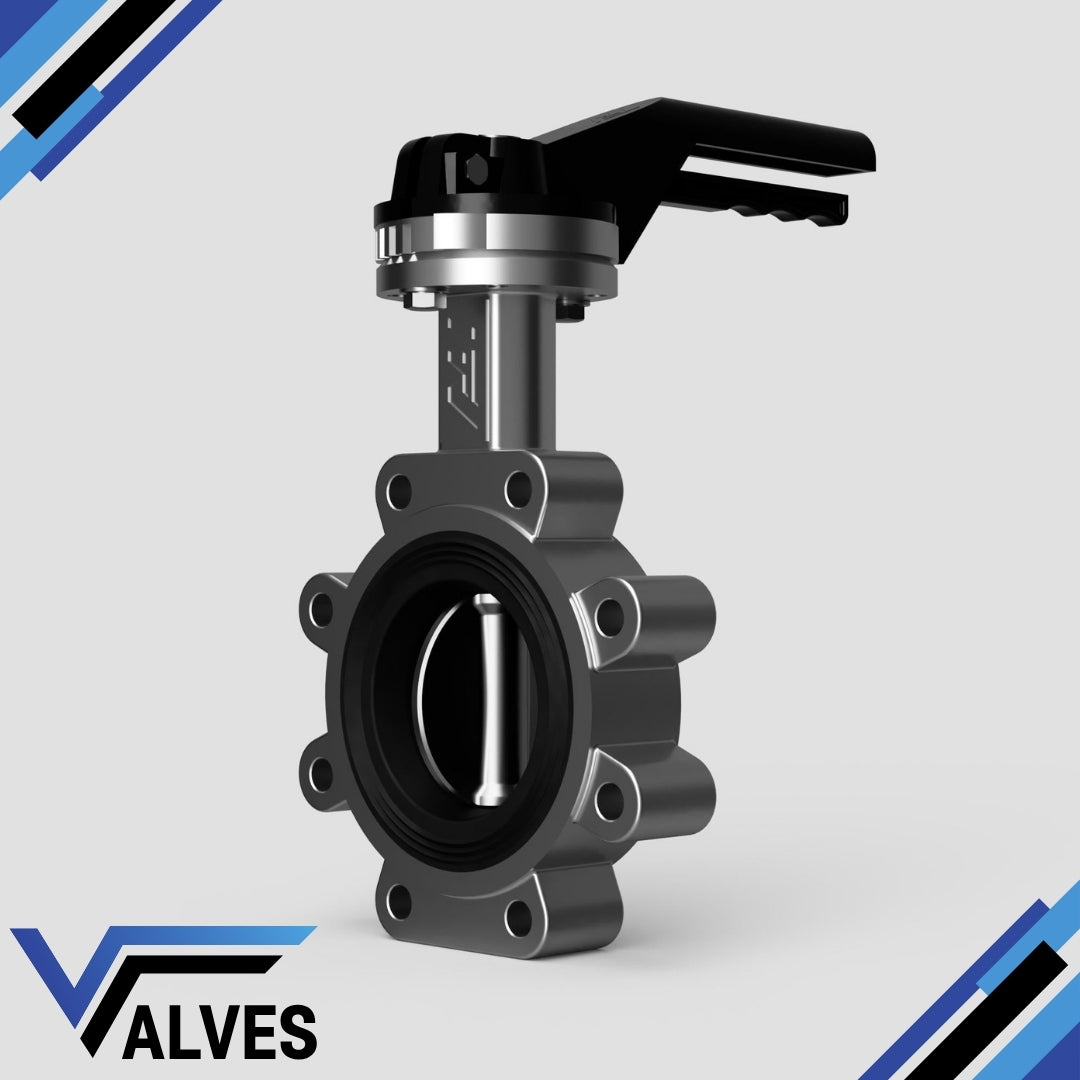Valves UK
TTV Stainless Steel Lugged Butterfly Valve - Viton Seat
TTV Stainless Steel Lugged Butterfly Valve - Viton Seat
Couldn't load pickup availability
The TTV Stainless Steel Lugged Butterfly Valve with a Viton seat is a premium, high-performance valve engineered for demanding applications in various industries. Constructed from durable stainless steel, this butterfly valve offers superior resistance to corrosion and harsh environments, making it ideal for use in chemical processing, water treatment, food and beverage, pharmaceuticals, and other industrial sectors where reliability and longevity are essential.
Key Features:
Material: The body and disc of the valve are made from high-grade stainless steel, providing excellent corrosion resistance and structural integrity, ensuring long-lasting performance even in the most challenging conditions.
Lugged Design: The lugged design allows for easy installation between flanges, enabling the valve to be removed from one side of the pipeline without disturbing the other side. This feature is particularly useful for maintenance and inspection.
Viton Seat: The valve is equipped with a Viton seat, known for its exceptional chemical resistance, especially to aggressive chemicals, oils, and high temperatures. The Viton seat ensures a tight seal and reliable performance in various applications.
Versatile Applications: This butterfly valve is suitable for a wide range of applications, including on/off control of liquids, gases, and slurries. It is compatible with various pipe materials and can be used in both high and low-pressure systems.
Size Range: Available in multiple sizes to suit different pipeline requirements, ensuring that you can find the perfect fit for your specific needs.
Temperature and Pressure Ratings: Designed to handle a broad range of temperatures and pressures, making it a versatile choice for many industrial processes.
Manual and Actuated Options: The valve can be operated manually with a lever or geared handwheel, or it can be automated with pneumatic, electric, or hydraulic actuators for remote control.
Standards Compliance: The TTV Stainless Steel Lugged Butterfly Valve meets industry standards for quality and safety, ensuring reliable operation and peace of mind.
Applications:
Chemical Processing
Water and Wastewater Treatment
Food and Beverage Industry
Pharmaceutical Manufacturing
HVAC Systems
Marine and Offshore Industries
The TTV Stainless Steel Lugged Butterfly Valve with a Viton seat is a robust and versatile solution for your industrial valve needs, offering superior performance, easy maintenance, and reliable operation in the most demanding environments.
Share

FAQ's
What is the difference between a valve and an actuator?
What types of actuators are available?
The main types of actuators are:
Pneumatic actuators – use compressed air for fast, reliable operation.
Electric actuators – use electrical power for precise control.
Hydraulic actuators – use fluid pressure for high-torque applications.
Each type offers unique advantages depending on the environment, media, and system control needs.
How do I choose the right actuator for my valve?
To select the correct actuator, consider:
Valve type and torque requirement
Power source available (air, electric, or hydraulic)
Operating environment (temperature, humidity, hazardous area)
Control signal type (on/off or modulating)
Matching actuator torque and compatibility with the valve’s ISO mounting ensures reliable performance.
What are the main types of valves used in automation?
The most common valves in automated systems include:
Ball valves – for tight shutoff and quick operation.
Butterfly valves – for larger flow control with compact design.
Globe valves – for precise throttling and flow regulation.
Check valves – to prevent backflow.
Gate valves – for full bore flow isolation.
What’s the difference between a double-acting and spring-return actuator?
Double-acting actuators use air (or power) to both open and close the valve.
Spring-return actuators use air to open (or close) the valve, and a built-in spring to automatically return it to a safe position when power or air is lost — ideal for fail-safe operation.
How often should valves and actuators be serviced?
Regular maintenance intervals depend on operating conditions, but a good rule of thumb is to inspect every 6–12 months.
This includes checking for leaks, lubrication, seal wear, and actuator responsiveness to prevent unexpected downtime.

